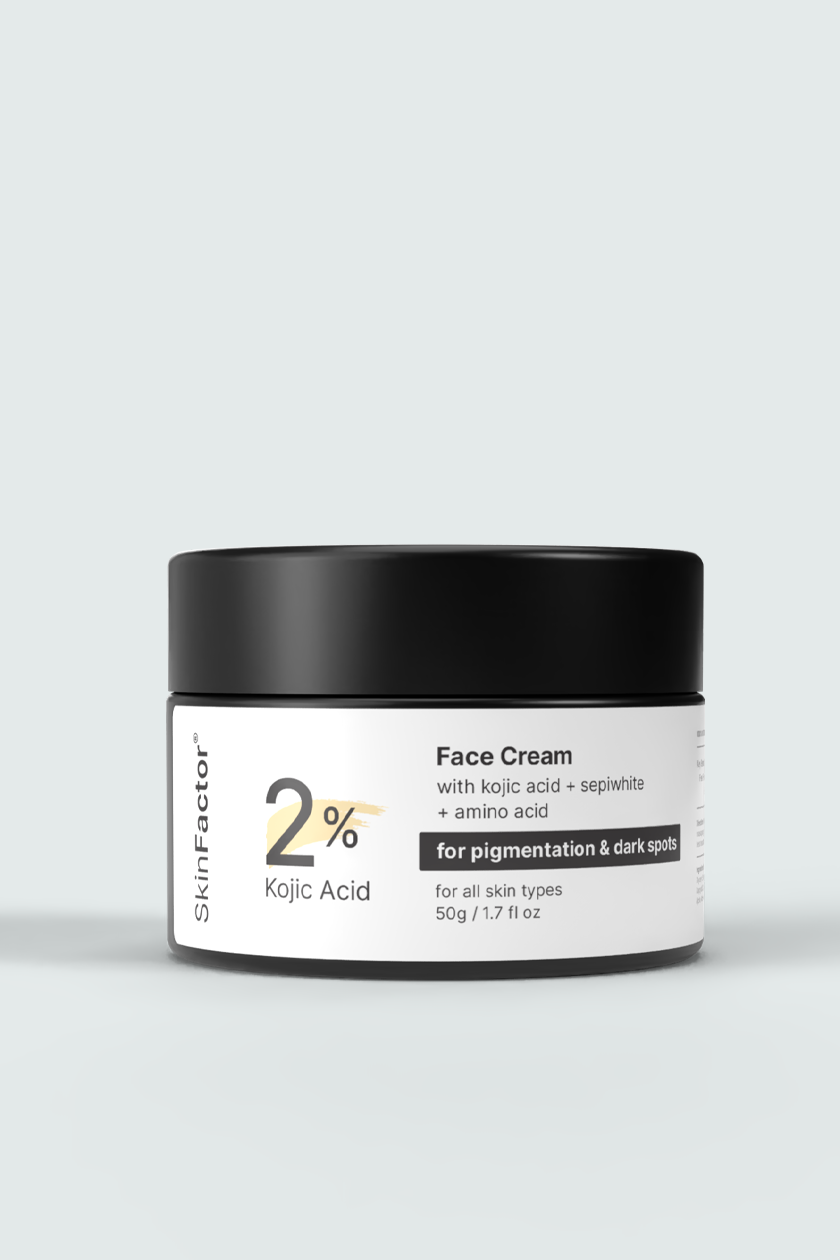Pigmentation issues like dark spots, melasma, acne scars, and uneven skin tone are some of the most common skin concerns worldwide. Two of the most talked-about ingredients for treating pigmentation are kojic acid cream and hydroquinone. While both are effective skin-lightening agents, they work differently, have unique strengths, and come with their own safety considerations.
In this article, we’ll break down the differences between skinfactor kojic acid cream and hydroquinone, helping you decide which one might be right for your skin.
🌿 What Is Kojic Acid Cream?
Kojic acid is a natural ingredient derived from fungi and fermented foods like soy sauce and sake. In skincare, kojic acid cream price in pakistan works by inhibiting tyrosinase, the enzyme responsible for melanin production. This reduces dark spots and promotes a brighter, more even complexion.
Benefits of Kojic Acid Cream:
-
Gentle skin-brightening effect
-
Reduces melasma, sun spots, and acne scars
-
Antioxidant properties that protect against free radicals
-
Suitable for long-term use with fewer side effects
⚪ What Is Hydroquinone?
Hydroquinone is a synthetic skin-lightening agent and has long been considered the “gold standard” for treating hyperpigmentation. It works by blocking melanin production at a deeper level than kojic acid. Hydroquinone creams are available in 2% over-the-counter formulations, while stronger versions (4% and above) require a dermatologist’s prescription.
Benefits of Hydroquinone:
-
Highly effective for stubborn pigmentation
-
Works faster than most alternatives
-
Clinically proven in treating melasma and post-inflammatory hyperpigmentation (PIH)
🔍 Kojic Acid Cream vs. Hydroquinone: Key Differences
| Feature | Kojic Acid Cream | Hydroquinone |
|---|---|---|
| Source | Natural (fungi/fermentation) | Synthetic compound |
| Mechanism | Inhibits tyrosinase to reduce melanin | Blocks melanin production at cellular level |
| Effectiveness | Gradual, suitable for mild to moderate pigmentation | Fast and powerful for stubborn pigmentation |
| Side Effects | Mild dryness, redness, sun sensitivity | Irritation, ochronosis (rare), not for long-term use |
| Safety for Daily Use | Generally safe for long-term | Best for short-term (3–6 months) under medical guidance |
| Best For | Sensitive skin, mild pigmentation, long-term maintenance | Severe pigmentation, melasma, deep scars |
⚠️ Safety Considerations
-
Kojic Acid Cream: Safe for most skin types, but requires consistent sunscreen use. Mild irritation may occur initially.
-
Hydroquinone: Should only be used under dermatological supervision, especially in higher concentrations. Long-term use may cause side effects like ochronosis (skin darkening).
📝 Which One Should You Choose?
-
If you have mild to moderate pigmentation, sensitive skin, or want a safe long-term option → Kojic Acid Cream is your best choice.
-
If you’re struggling with severe melasma, stubborn pigmentation, or deeper scars → Hydroquinone (short-term, with dermatologist guidance) may deliver faster results.
✅ Final Thoughts
Both kojic acid cream and hydroquinone are effective treatments for pigmentation, but their use depends on your skin type, condition severity, and tolerance. Many dermatologists recommend starting with kojic acid cream for safer, long-term results and reserving hydroquinone for more resistant pigmentation cases under professional supervision.



